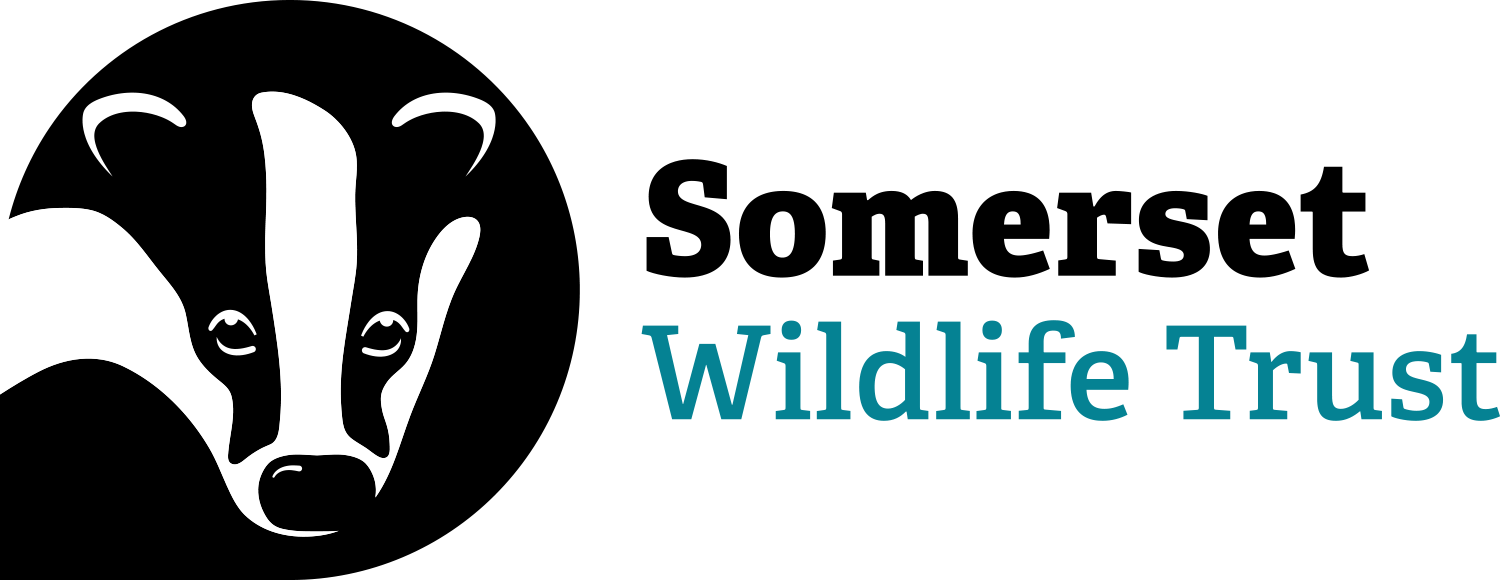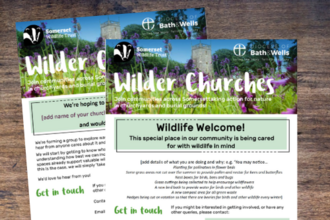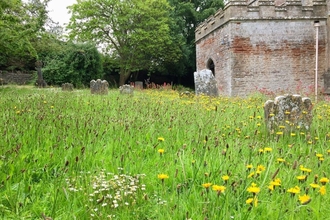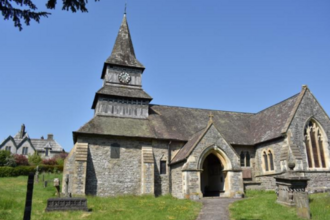Wilder Churches & Burial Grounds
Wilder Churches & Burial Grounds began in March 2021 as a partnership initiative between Somerset Wildlife Trust and the Diocese of Bath and Wells. The initiative supports communities to get to know the wildlife in their local churchyard, other church land or burial ground and work together to find ways to increase the value of these special places for wildlife.
Churchyards are often the oldest enclosed piece of land in a parish and many still support a rich variety of wildflowers and wildlife, having remained unscathed from the widespread loss of habitats seen in the wider countryside due to changing land management practices. The Diocese of Bath and Wells oversees 477 parishes of over 900,000 people in the county and are working with us to bring communities and church leaders together to learn more about their churchyard or burial ground and how they can manage them with wildlife in mind.
Wilder Churches: catch up and join in!
It's never too late for a community to get involved in Wilder Churches & Burial Grounds!
In 2025, we ran a refresh of the training, with all the key things covered in three recorded sessions: 1: Where to start 2: Taking action for nature and climate and 3: Creating a management plan
New communities are always welcome and watching the videos is a great place to start!
Wilder Churches Session 1: Where to start? (2025 training refresh!)
In this Wilder Churches session SWT's Pippa Rayner introduces the initiative and the importance of churchyards and burial grounds for nature and people, including why these special places are much more likely to retain species-rich habitats that the surrounding countryside. We then focus on who to talk to first, how to get to know the existing value of your local churchyard for nature, as well as how to involve or gain feedback from your community.
Wilder Churches Session 2: Taking Action for Nature and Climate (2025 training refresh!)
This session focuses on actions you can take for nature in churchyards and similar spaces to conserve existing wildlife value and/or enhance or create valuable habitats. We provide guidance on ways to manage grassland, hedgerow, woodland, orchard and other habitats. This includes the practicalities of management including machinery options, and what you might need to do, how often, and when.
SWT's Pippa Rayner also covers ways to create new habitats and how to source seeds for wildflower areas you might be planning, as well as ways formal planting and other features can help support pollinators.
The Diocese of Bath & Well's Sara Emmett is also on hand to talk about any permissions you might need before taking action for nature in your churchyard.
Wilder Churches Session 3: Creating a management plan (2025 training refresh!)
In this session, we provide advice to help you to consult your community about potential changes for nature in your churchyard or burial ground. This is a vital step when planning ongoing management, and should help to shape your ideas for the space.
We then cover how to create a simple, practical management plan for the space, with advice on the key things to include as well as useful templates for planning annual tasks.
We also share ideas and resources to help you find people (or funding) to bring your plans to fruition!
First Event of 2025 with Bishop Michael Beasley
This online event with the Bishop of Bath & Wells helped set the scene for a 'refresh' of the Wilder Churches training in 2025, inviting more communities to get involved.
Bishop Michael Beasley shared his love for the natural world, including stories from his own woodland and his passion for environmental care. Along with along with reps from SWT and the Diocese of Bath & Wells this provided a unique opportunity to ask questions, gain inspiration for creating wilder churchyards, and hear the Bishop’s vision for a greener, flourishing Diocese.
Wilder Churches focus session: Bringing your community with you
This dedicated session focuses on the importance of engaging your local community from the very start and provides useful advice and ideas about ways to communicate, consult and bring people together.
Taking action for nature in churchyards and similar spaces is not always easy, but with simple steps you can shape your plans and help ensure your churchyard, and the wildlife it supports, are valued by the community for many years to come.
Wilder Churches: Sharing stories
In this session, which took place in February 2022 as part of the original Wilder Churches training programme, we heard from communities across Somerset taking part in the initiative. Speakers from eight communities shared their stories of the wildlife they have discovered, the actions they have taken and what they had planned for the future in their local churchyard or burial ground.
This was in many ways our most inspiring of the original Wilder Churches sessions, so we encourage you to take a look and pick up ideas for what you might do in your local burial ground!
Other SWT training that might be of interest: Making meadows and welcoming wildflowers
This video is a recording of our 'making meadows and welcoming wildflowers training event. The session provides advice on creating, enhancing and managing small-medium areas of wildflower grassland for nature, tailored to individuals, communities, organisations or businesses.
Other SWT training that might be of interest: How to plant the 'right tree' in the 'right place'...
Trees provide homes for wildlife whether hunter or prey, shelter from the elements, secure passage across our landscapes and food sources for all manner of species. But before you pick up your spade – remember: nature’s ecosystems are complicated. Planting a tree changes an ecosystem and has a significant impact on the physical characteristics of an environment, such as shading, water cycling and soil pH.
This session, held in 2020, covers some of the thigns to think about
Resources
In order for nature to recover, we need many more people on nature’s side. The science shows that if just one person in every four (25%) visibly takes action, this can be enough to change the minds and behaviour of the majority. By taking visible action for nature, no matter how small, you can make an impact and invite more wildlife back into our lives.
Key to the Wilder Churches initiative is the ongoing support provided to anyone and everyone interested in being involved. Free online training sessions and get-togethers are supporting communities to take positive action in churchyards and other burial grounds at a pivotal time for nature. See below for more resources and advice to help get you started.





























